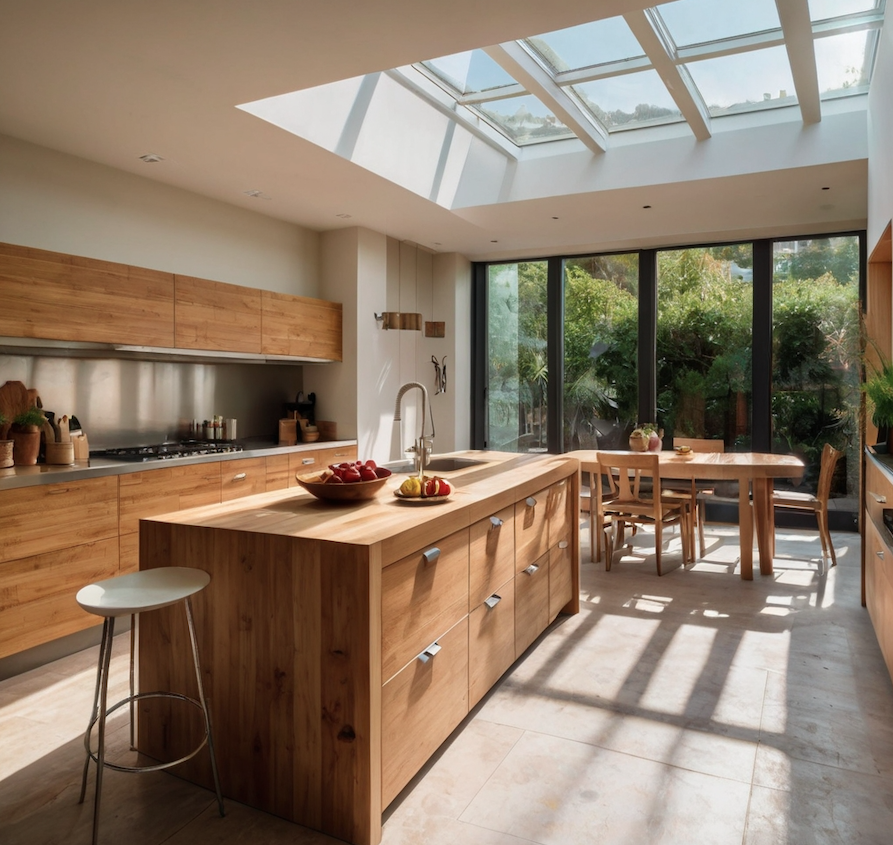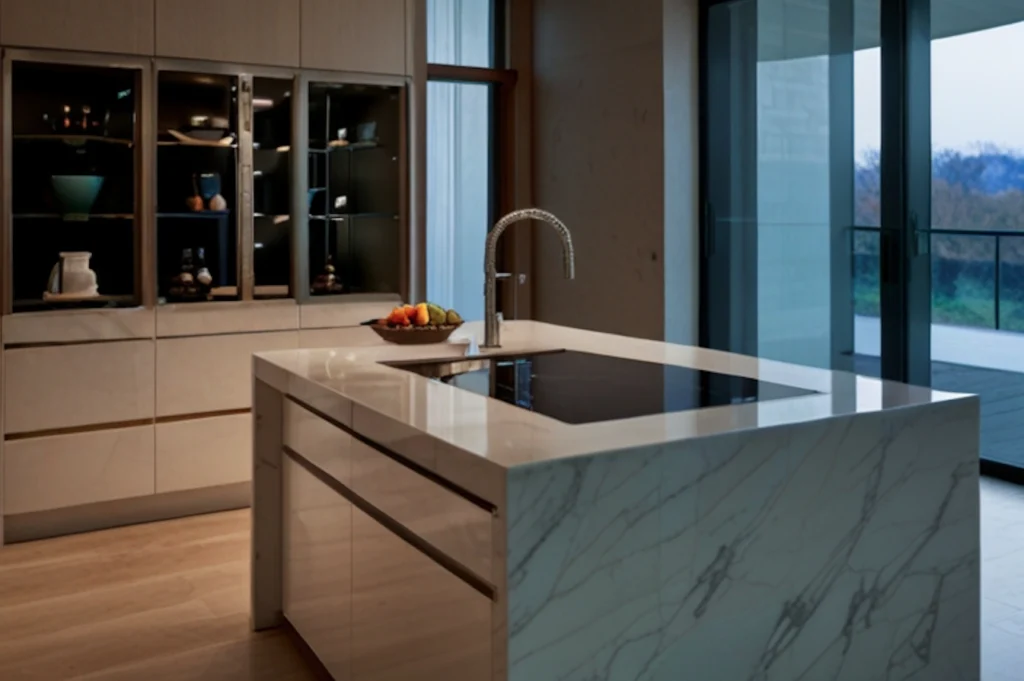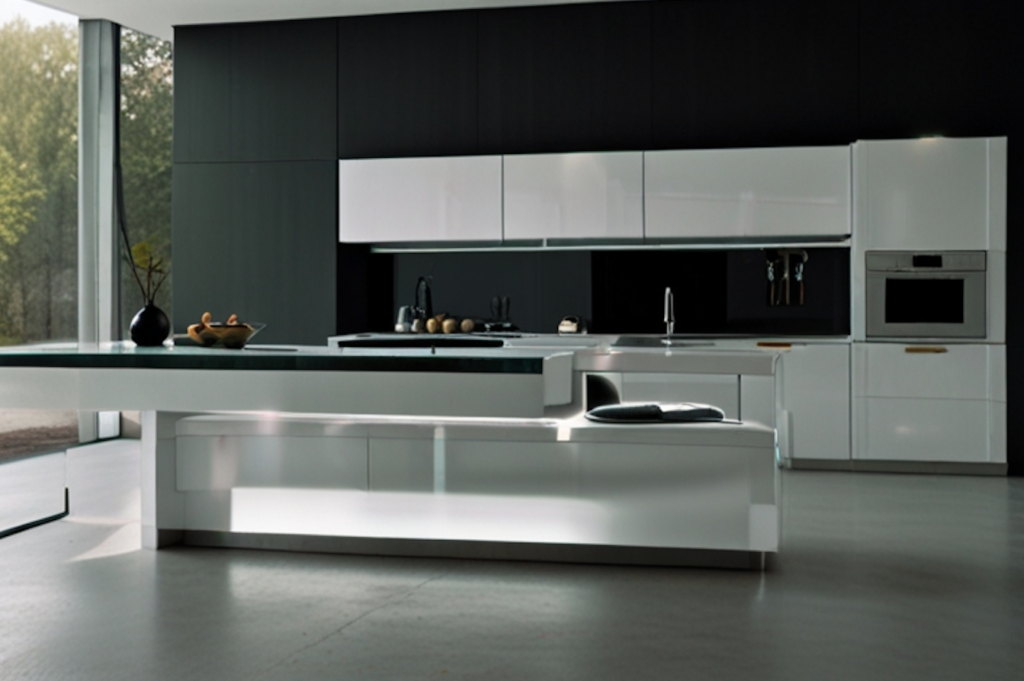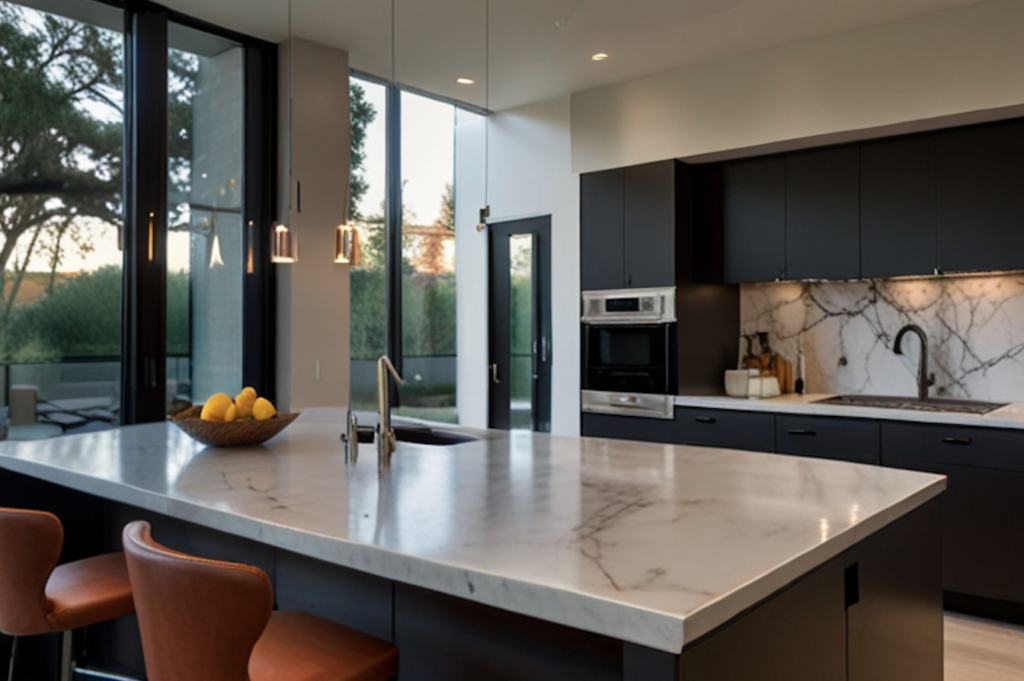The foundation of a beautiful and functional kitchen starts with the floor. Kitchen flooring endures a lot of wear and tear, from constant foot traffic to spills and splatters. Choosing the right material is essential for creating a space that’s not only stylish but also durable, easy to maintain, and comfortable underfoot. This article explores the most popular kitchen flooring options, highlighting their pros, cons, and design considerations to help you find the perfect fit for your dream kitchen.
Types of Kitchen Flooring Materials
Ceramic and Porcelain Tile:
Ceramic and porcelain tiles are classic and timeless choices for kitchen flooring. They are renowned for their exceptional durability, lasting for decades with proper care. These non-porous materials are highly resistant to water, stains, scratches, and dents, making them ideal for high-traffic areas like kitchens.
Pros:
- Extremely durable and long-lasting
- Impervious to water and moisture
- Resistant to stains, scratches, and dents
- Easy to clean and maintain
- Wide variety of styles, colors, patterns, and finishes
- Can be used with radiant heat flooring systems
Cons:
- Can be cold underfoot, especially in colder climates
- Grout lines can require regular cleaning and sealing to prevent staining and mildew growth
- Can be prone to cracking if the subfloor is not properly prepared
- Installation can be time-consuming and require professional expertise
Design Considerations:
- Grout Color: Choose a grout color that complements your tile selection and overall kitchen design. Lighter grout colors can make a space feel larger, while darker grout colors can hide dirt and grime more effectively.
- Pattern Options: Tiles can be laid in various patterns, such as herringbone, basketweave, or subway tile layouts. Consider the size of your kitchen and the overall design style when choosing a pattern.
- Tile Size: Larger tiles can create a more modern look, while smaller tiles can add visual interest and work well in traditional kitchens.
Here are some questions to consider when deciding if ceramic or porcelain tile is right for your kitchen:
- Do you prioritize durability and easy maintenance?
- Are you comfortable with the potential coldness underfoot?
- Do you have the budget for professional installation?
Luxury Vinyl Tile (LVT):
Luxury Vinyl Tile (LVT) has become a popular choice for kitchen flooring in recent years. It offers a combination of affordability, durability, and realistic wood or stone looks. LVT planks are constructed with a layered core that provides water resistance, dimensional stability, and a comfortable feel underfoot. The top layer features a high-definition printed image that replicates the look of natural materials like hardwood, stone, or even ceramic tile.
Pros:
- Affordable compared to natural stone or hardwood flooring
- Water-resistant and easy to clean
- Wide variety of styles and designs that mimic natural materials
- Comfortable and warm underfoot
- Relatively easy to install (floating LVT options)
- Requires minimal maintenance
Cons:
- Can be susceptible to scratches and dents, especially with lower quality LVT
- Not as durable as natural stone or ceramic tile
- Some LVT options may not look as realistic as natural materials
Design Considerations:
- Plank Size: LVT planks come in various widths, from narrow to wide planks. Wider planks can create a more modern look, while narrower planks can evoke the look of traditional hardwood flooring.
- Mimicking Natural Materials: When choosing an LVT that mimics natural materials, consider the grain patterns, color variations, and distressing of real wood or stone to ensure a more realistic appearance.
Here are some questions to consider when deciding if LVT is right for your kitchen:
- Are you looking for an affordable and water-resistant flooring option?
- Do you prioritize comfort and warmth underfoot?
- Is a realistic look of natural materials important to you?
Natural Stone: For a touch of timeless elegance and natural beauty, natural stone flooring is a luxurious choice for kitchens. Stone like granite, slate, and marble offer unmatched durability and can add significant value to your home. Each stone variety boasts unique veining patterns and color variations, creating a one-of-a-kind look for your kitchen.

Pros:
- Extremely durable and long-lasting
- Natural beauty and unique variations in veining and color
- Increases the value of your home
- Can be used with radiant heat flooring systems
- Wide variety of stone types to choose from (granite, slate, marble)
Cons:
- Most expensive flooring option on this list
- Susceptible to staining, etching, and scratching (especially marble)
- Can be cold underfoot
- Requires regular sealing for some stones
- Installation can be complex and require professional expertise
Design Considerations:
- Stone Type: Each stone type offers unique characteristics. Granite is known for its durability and variety of colors. Slate offers a rustic charm with a natural cleft texture. Marble is prized for its luxurious look but requires more careful maintenance.
- Sealing Requirements: Some stones, like marble, require regular sealing to maintain their stain resistance. Discuss sealing needs with a professional stone installer.
Here are some questions to consider when deciding if natural stone is right for your kitchen:
- Do you prioritize unmatched beauty and durability?
- Are you willing to invest in a higher-priced flooring option?
- Do you have the budget for professional installation and regular maintenance (if necessary)?
Engineered Hardwood:
Engineered hardwood offers a beautiful and inviting alternative to solid hardwood flooring for kitchens. While it shares the warmth and timeless appeal of natural wood, engineered hardwood boasts improved moisture resistance compared to its solid counterpart. This makes it a more suitable choice for kitchens where spills and splashes are inevitable.
Pros:
- Warm and inviting underfoot
- Beautiful natural wood grain patterns and colors
- More resistant to moisture damage than solid hardwood
- Can be installed over radiant heat flooring systems
- Wide variety of wood species and stain options to choose from
- Relatively easy to install (floating engineered hardwood options)
Cons:
- Susceptible to water damage if not cleaned up immediately
- Requires periodic refinishing to maintain its beauty
- Not as durable as natural stone or ceramic tile
- Can be more expensive than LVT or laminate flooring
Design Considerations:
- Wood Species: Popular wood choices for engineered hardwood kitchens include oak, maple, and hickory. Each wood species offers unique characteristics in terms of grain pattern, color, and hardness.
- Stain Color: The stain color you choose can significantly impact the overall look and feel of your kitchen. Lighter stains create a more open and airy feel, while darker stains can add a touch of sophistication.
Here are some questions to consider when deciding if engineered hardwood is right for your kitchen:
- Do you prioritize the warmth and beauty of natural wood flooring?
- Are you willing to invest in periodic refinishing to maintain the floor?
- Is your kitchen layout conducive to quick cleanup of spills and splashes?
Resilient Flooring Options for Kitchens:
Luxury Vinyl Tile (LVT) isn’t the only contender in the world of resilient flooring for kitchens. Here are some other popular options that offer unique benefits and considerations:
- Cork: Cork flooring is prized for its exceptional comfort underfoot, sound absorption properties, and natural, sustainable credentials. Cork comes in tiles or planks and offers a warm and inviting aesthetic. However, cork can be susceptible to moisture damage and may require a sealant for use in kitchens.
- Bamboo: A rapidly renewable resource, bamboo offers a beautiful and eco-friendly flooring option. It boasts a hardness comparable to oak and can be finished in a variety of stains. However, bamboo flooring requires regular maintenance and can be susceptible to moisture damage if not properly sealed.
- Linoleum: A classic and eco-friendly choice, linoleum is made from natural materials like linseed oil, cork dust, and wood flour. It’s renowned for its durability, stain resistance, and bacteriostatic properties. However, linoleum can be difficult to install and requires specific cleaning and maintenance procedures.
Design Considerations:
- When choosing resilient flooring options like cork or bamboo, consider the natural color variations that contribute to their unique aesthetic.
- Linoleum offers a wider range of colors and patterns, allowing you to complement your overall kitchen design.
Here are some questions to consider when deciding if resilient flooring options are right for your kitchen:
- Do you prioritize sustainability, sound absorption, or comfort underfoot?
- Are you willing to invest in additional maintenance for certain options like cork or bamboo?
- Do you have the installation expertise required for options like linoleum?
By understanding the pros, cons, and design considerations of these resilient flooring options, you can make an informed decision that complements your kitchen’s functionality and style.
Additional Considerations for Kitchen Flooring
While the material selection is crucial, other factors play a role in the success of your kitchen flooring project. Here are some additional considerations to keep in mind:
- Subfloor Preparation: Ensure your subfloor is level, smooth, and free of moisture before installing any type of flooring. Uneven subfloors can lead to uneven flooring and potential installation problems. Depending on the condition of your subfloor, repairs or additional underlayment may be necessary.
- Underlayment: Underlayment provides a cushioning layer between the subfloor and your chosen flooring material. It can improve sound absorption, comfort underfoot, and moisture protection. The type of underlayment you need will depend on the flooring material you choose.
- Transition Strips: If your kitchen flooring transitions to a different type of flooring in an adjoining room, transition strips will provide a smooth and finished look. They come in various materials and styles to complement your chosen flooring options.
Here are some additional tips for a successful kitchen flooring project:
- Consider your lifestyle: If you have pets or young children, durability and water resistance become even more important factors.
- Think about maintenance: Choose a flooring material that fits your cleaning routine and maintenance preferences.
- Order samples: Ordering samples allows you to compare colors, textures, and finishes in the lighting of your own kitchen.
- Get professional advice: Consult with a flooring specialist to discuss your options and ensure you choose the right material for your needs.
By carefully considering these additional factors, you can ensure your new kitchen flooring is not only beautiful but also functional and long-lasting.
Conclusion
The right kitchen flooring can elevate your space from functional to fabulous. It sets the foundation for style, comfort, and functionality in the heart of your home. By carefully considering the factors outlined in this article, you can make an informed decision that complements your lifestyle, design preferences, and budget.
Remember, the perfect kitchen floor is not only beautiful but also durable, easy to maintain, and comfortable underfoot. With a wide range of materials and options available, there’s a perfect kitchen floor waiting to be discovered. So unleash your creativity, explore your options, and transform your kitchen into a space you’ll love for years to come.



